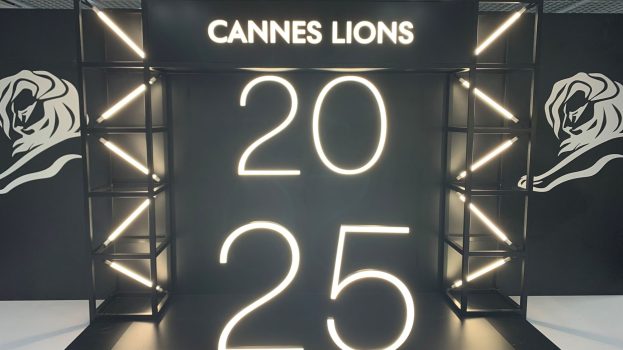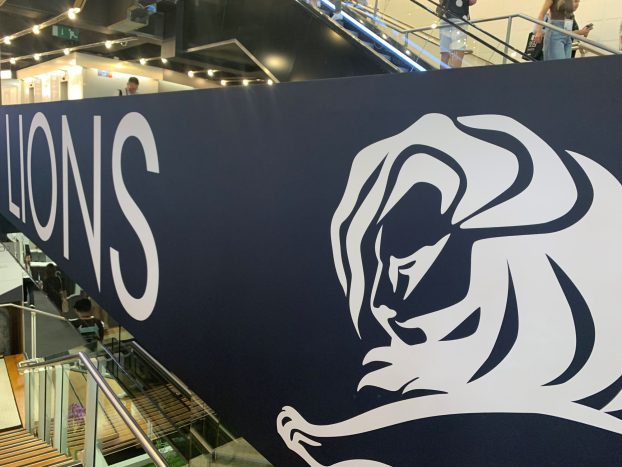Over the past decade, both India and China have introduced major economic reforms that have significantly opened their markets to foreign investment. Both are seeing the rapid rise of a middle class with enormous buying power and a thirst for Western brands. And yet both are burdened with weak infrastructure, complex tax laws and abundant red tape.
For a Canadian company, entering the markets of these emerging economic superpowers is not to be taken lightly, or timidly. It’s a massive undertaking that requires long-term investment, flexible business plans and skillful negotiations with local partners and governments. Still, a number of Canadian companies, including Research In Motion, Sun Life Financial, Bombardier and Bata, have made the effort and been rewarded with success. Is it possible that Canadian values like multiculturalism, tolerance, patience and respect help us to do well in these markets?
The fact that the Home Depot chose Canadian Annette Verschuren to head its Asian division might suggest that some think so. In 2006, the Vinings, Ga.-based big-box retailer bought the Home Way, a Chinese home improvement retailer with 12 stores across six cities in China, and tapped a team led by Home Depot Canada president Verschuren to guide its entry into China.
‘We’re still learning how to approach that market, which is very different from ours,’ says Peg Hunter, VP marketing and communications for Toronto-based Home Depot Canada. ‘Our heritage is do-it-yourself, and there’s not a lot of do-it-yourself in China. If you can afford home improvement, you have enough to have somebody do it for you, and labour is cheap and plentiful. And when you buy a home, it’s a concrete box that has plumbing and electrical and you finish it yourself. That’s different from what we’re used to, and it puts a new spin on our business.’
Still, other parts of the business have translated well. ‘The Chinese middle class loves Western brands and eco initiatives, so we’ve introduced our Eco Options program there, and have had good results,’ says Hunter. ‘But we’re really just building operations and looking toward the key consumer trends so we can redefine our business model. Because it’s a very different consumer, and we have to learn to cater to it differently.’
So far, the company’s marketing has been based on public relations and flyers. ‘In China, retail is paper-based, so those are the most efficient ways of reaching people,’ Hunter explains. ‘From a PR standpoint, we’ve had connections with local governments and community groups, and the Chinese really prize the fact that you’re part of the community.’
Hunter maintains it’s important to be able to rely on local partners. ‘I’m not trying to manage it from here,’ she says. ‘The marketing director is from that area, and she knows local media and PR and how to put events together.’
Toronto-based Bata Shoes has been operating in India since 1929 and in China since 2004. Jean Zeng, the Canadian retail branch manager for Guangzhou-based Bata China, echoes Hunter’s emphasis on local PR. ‘Bata has been a footwear retailer and manufacturer for over 100 years and operates in 50 countries, but the brand was almost unknown to Chinese consumers when it entered the market,’ Zeng explains. The company focused on strategic marketing efforts, including print advertising in magazines geared to urban white-collar workers, press coverage featuring the Bata family and visuals presenting Bata as an international brand with European heritage.
Bata also engaged a local PR company to spread the word. ‘With the huge population, using advertising to reach the target audience could be expensive,’ says Zeng. ‘Strategically, utilizing PR can be very effective.’
What strategies have other companies used to ease the transition into these markets? Strategy pulled together a round table of Chindia experts, led by moderator Joan McArthur and exec editor Mary Maddever, to discuss where the opportunities lie for Canadian businesses.
Joan McArthur: There seems to be an attraction between Canadian marketers and the Indian and Chinese markets. Is that because Canadians are more resourceful and resilient than Americans?
John Torella: At the first meeting I had in Mumbai, the client said, ‘The reason you’re here is because Canadians are great teachers. We like the Canadian mentality, the patience, the diversity.’ There is a strong attraction.
Sean Hu: As far as China is concerned, Canada is as attractive as other Western countries, but Canadians have to be more aggressive. That’s the problem. The economy is good, and financial institutions are doing well, as are Canadian designers and architects. Others will also, if they are aggressive.
Chris Lund: We had a real struggle understanding the market and the applicability of our skill sets in China. In contrast, our experience in India has been as John described. I worked in India for two years, and my understanding of it is barely the tip of the iceberg. It’s a complex market with experiences from different cultures, races and religions. In some ways we’re better equipped to handle that diversity because of our multicultural view of the world. We understand that what works here will have to be adapted for those markets.
We’ve had success there as a result of working with people with academic and intellectual sophistication but not a lot of experience in the retail sector. Their financial acumen and courage to try new things are unmatched in anything I’ve seen in North America in the past 10 years. It’s some of the most interesting work our firm has done. And they are looking for people to come in and work with them, to provide a skill set they don’t have. So the Canadian approach of being a little more humble has worked for us.
Torella: There are 15 million retailers in India, of which 80% are small mom-and-pop storefronts. One in 20 people there is in retail.
Mary Maddever: Where are they in terms of evolution from the corner store to the supermarket, and how did they find you?
Lund: They found us as a result of a relationship we had with Ikea in Canada. The VP of marketing was an Indian woman [Nandini Sethuraman], and after Perennial did some work with Ikea, she went to work at Spencer’s, one of the big Indian retail houses. She called us after four weeks and said she could use our help. That company was trying to go into organized retail with big supermarkets, involving retail distribution strategies, store designs, private label strategies, all the things we would have seen here but done in a unique Indian way.
Companies like 7-Eleven have talked about going into India, but competing with the local ‘kiranas’ is tough. These stores are run by mom-and-pops who know everybody in the neighbourhood. You can say, ‘I want these 12 items,’ and within an hour they’re dropped off, and you don’t pay till the end of the month. That’s tough for a 7-Eleven to compete with.
Torella: All the furor about how big retail is going to destroy mom-and-pop stores in India is wrong. What Chris described is the reality of 80% of the market. The other 20% is where the action is now. There isn’t a major retailer in the world that hasn’t got India in its sights, with some kind of joint venture. Wal-Mart, Marks & Spencer, Home Depot…they’re going after a segment that is underdeveloped.
McArthur: Chris, if you hadn’t had an advocate, would you still have made an inroad into the Indian market?
Lund: Today I’ll say yes, given what’s going on with the U.S. economy. But two years ago, I probably wouldn’t have had the courage to enter a market of 1.1 billion people and dig in. As a result of being in India, we’re now being asked to do work in Dubai and Kuwait. We’re looking at those opportunities today, but two years ago we might not have.
McArthur: How do Canadian marketers leverage these opportunities?
Gary Comerford: We took a deliberate, strategic approach. In 1996 we identified where the opportunities were for the next two decades, and it was Asia. Our joint venture was signed in 1999, and we’re quite substantial in India right now, with 85,000 advisors and hundreds of branches. Our brand, Birla Sun Life, is one of the most recognized financial services brands in India.
Even today, with 35 million people, we cannot be a world-class life insurance company servicing Canada alone. We’re an international success story because we’ve had to go out and look at other markets.
Everything in China and India is happening at hyper-speed. If you’re too cautious, you’ll be a niche player. Our strategy is to be a significant player, and that takes a great deal of effort, capital and intellectual talent. Eventually we’ll get more predictable growth rates, but right now, given the economy and the emergence of the middle class, there’s unbelievable growth in our business, and we have to take advantage of it.
McArthur: How do you start the conversation with partnerships?
Comerford: You have to, by Indian law, have a partner. The most important thing is to get in front of the right person. The business world is not like a chess game, where you use intellectual rigour to move your pieces. It’s a pinball machine, and there are times when you control the levers and times when you hit something and you’re on the other side of the field and don’t know how you got there. So you have to be very opportunistic. That core 80% of retail in India is not going to go away. And the other 20% will be difficult to go after, because of entrenched traditional values and consumer thinking. Will that evolve and change? Absolutely. Even in North America things happen quickly. But in these markets, what would have once taken five years happens in one.
It’s difficult, no matter how big the company is, to run it by remote control. Nothing happens on the phone. So it’s about learning the flow and the respectful dialogue.
McArthur: Is there a way to do a 10-year strategic plan in a market like that?
Comerford: My strategy is that I’ve got to complete the marathon, but if I focus on the whole distance, the enormity of it causes me to make it more difficult. If I break it down to measurable benchmarks, it’s a lot easier. And that’s the same as working internationally. We were almost two years in India before we signed a joint venture. But we were having discussions with our partner to make sure we were on the same page, and we’re still together. Sun Life did not have another partner in the world at that point, and this gave us an opportunity to learn the Indian market. It created a brand. It created a cadre of management we can feel good with. And eventually you notice you’re closer to the end of the marathon than you were.
McArthur: What strategies work in China?
Hu: In China, you have to establish a relationship with a local partner first, and develop your plan from there. You don’t need a specific plan right away.
McArthur: What categories have the potential to be most successful?
Torella: There are huge opportunities there in the high-end luxury category. We think we know luxury, but you haven’t seen luxury until you’ve seen it in China.
Hu: In terms of advertising and marketing, Canadians are creative, they have good ideas, and that’s a big advantage. Chinese advertising companies are looking for innovative new ideas from Westerners, to compete with local companies. So the first step is to go to China. Join a trade mission to get to know Chinese partners, and get contracts from Chinese agencies for work. Then develop your plan. If you have creative ideas, people will buy them.
Comerford: Canadians are viewed favourably around the world, but sometimes it’s just about having the confidence to go forward. And there’s a cost. Some businesses can’t afford it, while others have to ask if they can afford not to. The trade mission is nothing more than the ticket and the introductions. It’s up to us to turn them into a business.
You have to be prepared to take advantage of situations as they present themselves. I don’t believe in a five-year business plan in these markets. You have a five-year vision, but your business plan is very opportunistic.
Torella: One area where Canadians have a huge opportunity is in digital. It’s just starting to develop, but it’s going to grow.
Maddever: Are Canadians keeping up with other countries in terms of expansion into these regions?
Lund: Canadians are willing to go out and test new fronts. Where we struggle is in where the resources come from. We don’t have Sun Life’s resources, and if you walk into a Canadian bank and ask for half a million bucks to open an office in India, they’ll say, ‘Are you out of your minds?’ It’s difficult to find investors.
Torella: We joined a group of retail consulting companies around the world because even the clients we’re working with here want a global perspective. We looked at India and saw the retail sector there growing at 20% annually. There’s no place in the world with that kind of retail growth, so it became a no-brainer. We said we want a five-year plan, but we want to revise it every 90 days, and that’s what we did. So it’s very dynamic and opportunistic. And that’s what Canadians have to do. Do your research, invest, be prepared to spend some time. It’s not going to happen just like that.
Lund: We go into these places and on the plane ride on the way home we bring out the spreadsheet because every single factor has changed. So you have to be up for it. And you can’t run the same formula you run in North America. It just doesn’t work.
McArthur: It sounds like the Canadian temperament is better suited to deal with these shifting-sands markets than the bigger, more structured companies with U.S. headquarters.
Lund: That resonates with me. That’s not to say the big U.S. companies aren’t there, because they have been for a long time.
Comerford: When I compete in Asia, I don’t care about the Americans. I worry about the Europeans. They’re aggressive and hungry and used to adapting to markets. We have lulled ourselves in North America into a market that has been very comfortable, and I worry that it’s not good for Canada in the long run. We need to embrace the notion that the epicentre of the economic world isn’t Pittsburgh anymore; it’s going to have a more foreign-sounding name.
And I picture a shrinking window of opportunity for the establishment of relationships. I liken it to a land rush, where you go and stake out your territory. The Sun Lifes of the world can do that, but we had to put down $100 million. And that opportunity comes only a few times in business life cycles. In India and China the rise of the middle class is going to be an enormous engine for the world. They’re going to recover from recession much faster than the U.S. will. When you look at the education, the consumers, the resources, you know that we need to be there.
Maddever: What are some examples of Canadian success stories there?
Comerford: Tom Bata went there decades ago, and Bata is now a household word in India. Most Indians think it’s an Indian company. It was one of the first signs I saw when I got off the plane.
Torella: Two words that children in India know: Buddha and Bata. They all wear Bata shoes to school, and there are lots of feet there!
Comerford: Scotiabank is beginning to expand there, as are Bombardier, Nortel and RIM. I was with the premier when he gave a Blackberry to my partner. That’s what we want – for my Indian partner, who owns a telecom company, to ask me for a Blackberry.
Hu: Canadian schools are doing well there.
Torella: We’re doing some work with the Body Shop, which is going to open 1,000 stores in China, Russia, India. And their biggest issue is where to get store managers.
In India there are 300 million people in the middle class, which is larger than North America. They want everything we have, and they’re educated, aspirational people. And there’s an intrigue the Chinese and Indians have with the concept of a brand. They’ve been the low-cost provider for brands, and now they want their own. So if we have an opportunity, it’s to transfer our branding skills, particularly in the grocery category. Everybody talks about President’s Choice and how you build that kind of brand. Those are skills they need.
Maddever: As local brands start to eye North America, is there an opportunity for Canadian marketing expertise?
Torella: Their growth is going to be in Asia. There’s enough there. I mean, go to Hong Kong and Beijing and see retail at its best.
Comerford: I agree. They’ve got decades of work conquering that region before they’ll want to go at North America. The shirt I’m wearing is by Louis-Philippe, a European brand owned by an Indian company. Tata has bought Jaguar-Land Rover. That’s what you’re going to see. Status is important; they understand that that’s what consumers want.
Lund: I think Canadians don’t underestimate the capabilities of these people, and perhaps the Americans and the Brits do. They are sophisticated, well-educated and humble, and it’s all about the cultural relationship.
Comerford: There’s a word that captures what you need to be to do business internationally, and that’s ‘respectful.’ Canadians do it genuinely. Normally we’d go to a market with a measured approach, but our partner has forced us to ratchet up our game. I went to a meeting and they were going to build 80 branches, and 90 days later it was 250. Now in Canada, who would open 250 branches in a year?
Lund: Nobody. One retailer we worked with put up over 400 stores in 11 months.
Torella: My partner’s working on a shopping centre of 11 million square feet. That’s three times the size of the Eaton Centre.
Maddever: So how do you market in that kind of environment?
Torella: It’s a cliché, but it guides us: think global, act local, sell personal. That’s where it starts. In all the meetings we’ve had, advertising has never emerged as a driving force of the business. It’s more of a personalized thing, like what about that cellphone that person has? What about the stores they experience? What’s the navigation of them getting to where they work and shop? Let’s see if we can create some impact there. So I think we have to turn around some of the global thinking that we bring as marketers, and start again where the action’s happening.
Comerford: We’re still shouting with billboards. They used to put them up when they knew I was landing. I’d sit in traffic for hours, and what else are you going to look at?
McArthur: Are you doing it to build the brand or to deliver a specific message?
Comerford: I think there’s the illusion of a specific message, but the way I justified it was that we were building our distribution system so rapidly. In India they don’t know Sun Life, but they know Birla, and I had to create the association of the two companies with credibility. We spent a lot of money doing that, and we have a very recognizable brand there now. Could we have got away without that? I don’t know, but I wasn’t prepared to take the risk.
McArthur: So you were able to build your brand on the back of one that had credibility.
Comerford: Absolutely. When we did research, the consumer reaction was Birla: local, credible, knowledgeable, ethical. Sun Life: international, respectable, large. We ended up getting the melding of the two.
The landscape in China and India is littered with companies that think they can take inferior products to those markets. Maybe that was the case 30 years ago, but not now. Mercedes went to India with an old-technology car they were going to build and sell there. But everyone who can afford a Mercedes goes to London, and they saw the new cars and were offended.
You have to look at each market and not assume you can take what you did in Chile and apply it to India. I think the consumer packaged goods companies have learned that lesson in the past 15 years. How do you buy toothpaste? In a tube, right? In India, they buy it a rupee at a time in a tiny pack. Everything is taken down, so there’s no inventory. It’s the same product, but packaged in a way that’s appropriate for a developing country.
Lund: And cigarettes are sold on a single basis, because they can’t afford to buy a pack. But with 400 million people buying one….
Torella: McDonald’s is an example of a company that’s adapted to India very well. It’s a different menu, and they learned the lessons over the years. I was part of the team that went to Moscow the first time, and the difference between that mentality of our way or the highway versus today’s is remarkable.
Comerford: McDonald’s took the challenges one at a time, but they had to have that perspective. And it’s difficult for smaller businesses. I’m not a huge fan of getting the government involved, but when you’re doing business internationally, the government needs to be the facilitator, because it is about relationships – and relationships on the most senior level, the prime ministerial level, are important in these markets.
Torella: They could at least make it easier to get your visa.
Lund: Part of the challenge is that they don’t teach you this stuff in business school. Everything is based on experience, and nobody has experience in these worlds.
Maddever: How much of your business is outside of Canada?
Torella: A quarter, and growing. But we’ve learned that you can’t generalize. China and India are different, and retail is different from financial services. We met with people in Mumbai who said, ‘We understand the model of that communications company; how can we relate that to the culture of India, the language and religious challenges?’ Don’t go over there with this naive idea that it’s going to be business as usual. It’s not.
Hu: China is very different from India in terms of mass media and advertising. And the Chinese government will give you money and land for your business so that it can tax you later on. There is competition between provinces, which gives you an advantage. As well, there is a huge Chinese community in Canada, and if you participate in trade shows or trade missions you can get in touch with someone to do business with.
If you negotiate with several cities or governments, you can get a very good deal for yourself. You can say, ‘This region is giving me this advantage, how about you?’ Tax benefits, tax exemptions, free land, those things are all forthcoming. The Chinese government is very pro-business.
Comerford: In India we were given a national license, while in China there’s city-by-city licensing. We have to build, be successful and then apply for another license for another city. So we’re always applying.
In China you can get lulled into a sense that it’s the same as the West, because you land in Beijing and the airport is marvelous. You get on a four-lane highway, you go to a North American-style hotel. And then you try and get a cab, and the real world catches up with you. Go to Chongqing, and the major form of transportation is a pole hung between two guys. It’s not the same.
MODERATOR
Joan McArthur is a partner at 27 Marbles Training, where she teaches courses for advertising and marketing professionals. She also teaches at OCAD, and has 20 years of experience at agencies including Ogilvy & Mather and McCann Erickson.
PANELISTS
Gary Comerford is SVP International for Sun Life Financial, which he joined in 1986. He was VP International and GM India for Sun Life Financial Asia, where he led joint ventures in India. He’s also a director of the Canada India Business Council.
Sean Hu is a consultant and trainer in Chinese business culture. He is president of the Chinese Business Chamber of Canada and author of A Canadian Business Guide for Chinese Immigrants.
Chris Lund is CEO of the Perennial Group of Companies, which is working on store design, brand repositioning and strategic direction for the Spencer’s grocery chain in India as it expands from 80 to 850 stores by 2009. He has also worked with Loblaw and Home Depot in Canada.
John Torella is senior partner/consultant, branding and retail marketing, at JC Williams Group, which has done retail consulting for a number of shopping centres in India. He is a member of the Retail Council of Canada and the author of re|Think Retail Branding.























